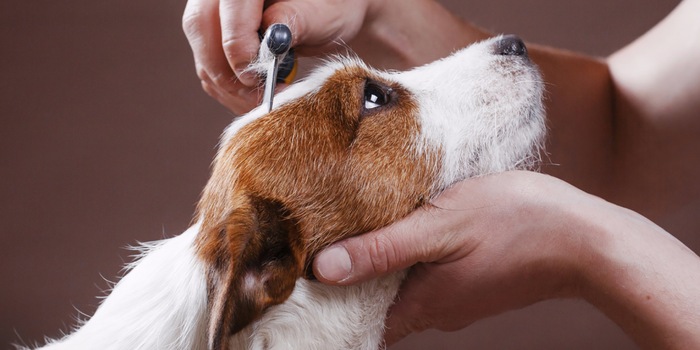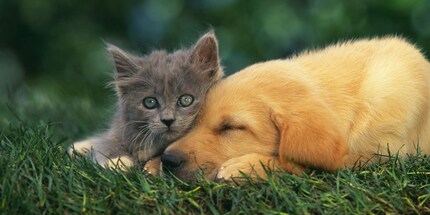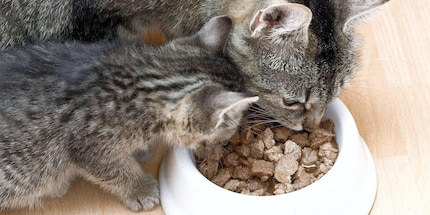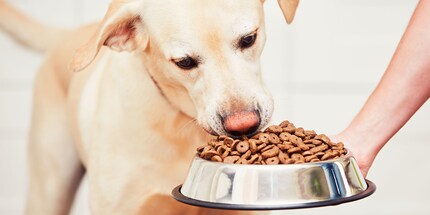
Hairy animals even in summer
Spring is in full bloom, the mercury is rising and we're all starting to dress more lightly. But we're not the only ones in this situation: cats and dogs are also entering their moulting period. This article explains how to help our animal friends shed their winter coat.
Ownership of a pet brings unspeakable happiness. Your faithful companion is waiting for you in the evening after your hard day's work. But it's not always all rosy. During moulting season, you're entitled to the chore of picking up hair.
For Médor or Mistigri, this situation isn't easy to live with either, even if they're capable of dealing with it on their own. Nevertheless, you can intervene to make it easier for them. You'll strengthen your bond with them at the same time. Here's how to do it.

The moulting period in our cat friends
Cats go through two moulting phases each year and change between winter and summer coats as a result. Did you know? Your feline's coat can weigh up to a quarter of his body weight, especially when the winter has been harsh. Of course, his hair falls out at the end of each cycle, when he's playing or grooming.
Hair growth begins with the anagen phase - the growth phase - during which a new root is formed, the hair grows and receives all the nutrients it needs; then comes the catagen phase - the intermediary phase - when the hair reaches the end of its life cycle.Finally comes the telogen phase - the resting phase - during which the hair no longer receives any nutrients. During the shedding phase, the animal sheds its hair. During moulting, however, this process can take on unsuspected proportions.
In addition to the usual shedding, your feline undergoes a complete moult twice a year: the first in autumn and the second in spring. The summer coat, which is finer and acts as an anti-UV barrier, means he doesn't suffer from the heat, while the winter coat, which is thicker and fluffier, helps him to winter coat, which is thicker and fluffier, helps it to cope with the cold, just like our clothes, which are adapted to the different seasons: a t-shirt for sunny days and a thick jumper when the weather is not so kind.
Here's how to help your feline
Whether the hair is short or long, brushing is a must, several times a day if possible, and always in the direction of growth; this removes dead hair more quickly, stimulates blood circulation to the skin, reduces hair ingestion and the formation of hairballs in the stomach. Plus, they don't mind it.
Another little-known method for making this moulting period more bearable for him? Applying nourishing oils whose unsaturated fatty acids, such as those found in safflower or linseed oil, encourage hair growth, make it easier to regurgitate swallowed hair and offer the gastrointestinal tract mucosal protection. Half a teaspoon a day, preferably in the morning with the first meal, will suffice. Beyond this dose, there is a risk of diarrhoea. In addition, there are other supplements on the market that make it easy to get rid of dead hair and promote the growth of a shiny, soft coat.
Food supplements for your feline
. [[product:13330946,6177306,12464575]]

Shedding period in dogs
Dogs shed all year round. However, it goes through a moulting period in spring and autumn, for reasons similar to those of the cat: coping with the high temperatures during the summer season and facing the harsh climate in winter. In our faithful companion, the moulting period can last up to 8 weeks.
Logically, moulting is most marked in spring, when all the winter coat is shed. If only our kilos stored up over winter could be gone so quickly. In autumn, Médor produces more undercoat - the lower layer under the topcoat - which acts as insulation, a real weapon against the cold. What's more, the summer coat is completely supplanted by the winter coat.
Please note: long-haired dogs such as Chow Chows, Eurasiers, Bernese Mountain Dogs and Huskies need to be brushed more regularly, as their hair is longer and knots can form. Poodles and Yorkshire terriers, for example, do not moult: they should therefore be clipped to allow them to prepare for the coming season.
Here's how to help your faithful companion
To help your dog through this transition, brush him at least once a day, or more if you wish. In spring, be sure to brush out the undercoat, which will make grooming easier. Another advantage of brushing? The bond you create with the animal.
There are quality oils and food supplements to help your dog during moulting, a process that can be eased or even accelerated by eating certain protein-rich foods. Protein is essential for the production of keratin, one of the most important components of hair. Vitamin B, zinc and biotin - already present in food or used as supplements - stimulate skin metabolism, strengthen the coat and make it silky.
Food supplements for your canine
. [[product:6435588,6177438,12795325]]

A little help can't hurt
The aim of these tips is to make life more pleasant for your pets. Of course, changing their coat is a totally natural process that they can cope with on their own, but helping them to do so ultimately requires little effort. And if you've never thought about it before, don't worry, there's a first time for everything.
When I'm not stuffing my face with sweets, you'll catch me running around in the gym hall. I’m a passionate floorball player and coach. On rainy days, I tinker with my homebuilt PCs, robots or other gadgets. Music is always my trusted companion. I also enjoy tackling hilly terrain on my road bike and criss-crossing the country on my cross-country skis.
Practical solutions for everyday problems with technology, household hacks and much more.
Show all